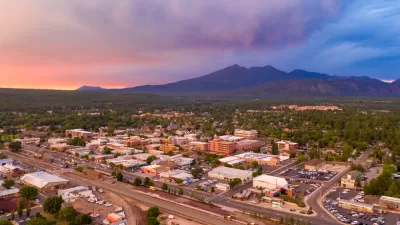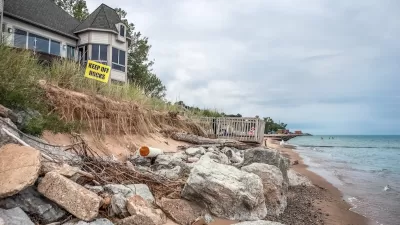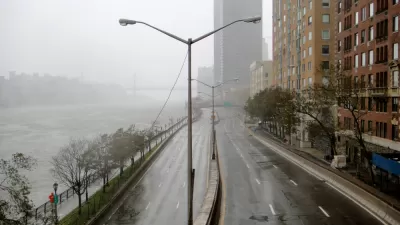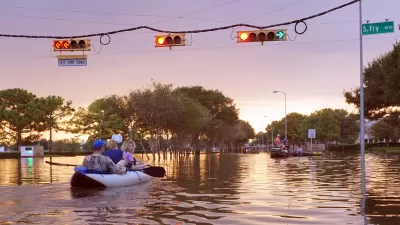Neighborhoods not previously at risk of flooding face new challenges as burn scars from recent fires leave them vulnerable to floods.

Like other Western states, Arizona is experiencing longer, more destructive wildfires. “And now,” writes Ryan Heinsius for Arizona Public Radio, “the burn scars left behind are causing flooding in neighborhoods that previously weren’t flood prone.” According to Heinsius, “Local emergency officials have scrambled to ease the impacts on residents, but long-term solutions won’t come immediately.”
“Arizona’s experiencing about a 2-degree increase in temperature Celsius, resulting in really just a variety of conditions that provide a huge hazard,” says Andrew Sanchez Meador, executive director of the Ecological Restoration Institute at Northern Arizona University.
For now, “Officials have provided as much short-term mitigation as they can in the form of hundreds of thousands of sandbags and miles of concrete barriers just to weather monsoon season.” Experts say long-term solutions include forest restoration projects that can protect communities in the coming years.
FULL STORY: The inevitable next time: Flagstaff residents grapple with the new reality of wildfire and flood

Trump Administration Could Effectively End Housing Voucher Program
Federal officials are eyeing major cuts to the Section 8 program that helps millions of low-income households pay rent.

Planetizen Federal Action Tracker
A weekly monitor of how Trump’s orders and actions are impacting planners and planning in America.

Ken Jennings Launches Transit Web Series
The Jeopardy champ wants you to ride public transit.

California Invests Additional $5M in Electric School Buses
The state wants to electrify all of its school bus fleets by 2035.

Austin Launches $2M Homelessness Prevention Fund
A new grant program from the city’s Homeless Strategy Office will fund rental assistance and supportive services.

Alabama School Forestry Initiative Brings Trees to Schoolyards
Trees can improve physical and mental health for students and commnity members.
Urban Design for Planners 1: Software Tools
This six-course series explores essential urban design concepts using open source software and equips planners with the tools they need to participate fully in the urban design process.
Planning for Universal Design
Learn the tools for implementing Universal Design in planning regulations.
Ada County Highway District
Clanton & Associates, Inc.
Jessamine County Fiscal Court
Institute for Housing and Urban Development Studies (IHS)
City of Grandview
Harvard GSD Executive Education
Toledo-Lucas County Plan Commissions
Salt Lake City
NYU Wagner Graduate School of Public Service





























